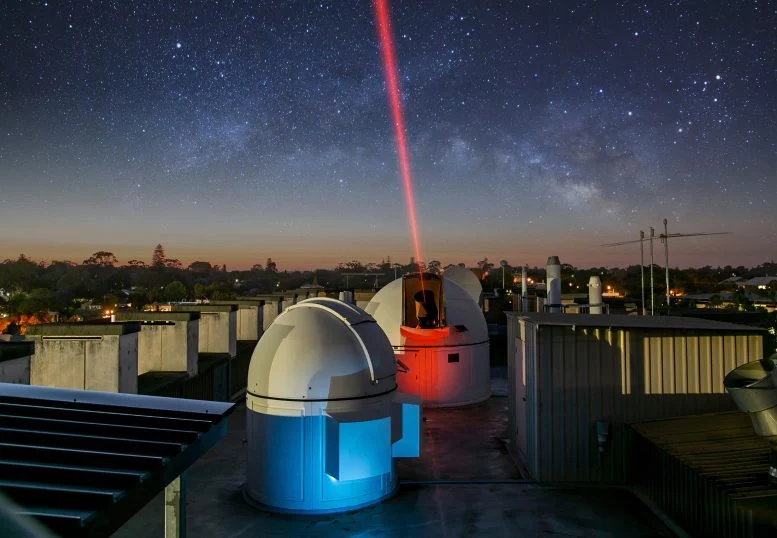The University of Western Australia’s TeraNet, a network of optical ground stations specialising in high-speed space communications, has successfully received laser signals from a German satellite in low Earth orbit. The breakthrough paves the way for a 1,000-fold increase in space-to-Earth communications bandwidth.
TeraNet’s laser communications test with OSIRISv1 marks a step towards replacing legacy radio systems with high-speed lasers for space communications in Western Australia. With funding from the Australian government, the network aims to support a variety of missions by improving data capabilities across multiple sectors.
Test that revolutionized laser communications
The TeraNet team led by Associate Professor Sasha Shedivi at UWA’s International Centre for Radio Astronomy Research (ICRAR) has received laser signals from OSIRISv1, a laser communications payload from the Institute for Communications and Navigation at the German Aerospace Center (DLR). OSIRISv1 is installed on the Flying Laptop satellite of the University of Stuttgart. The signals were detected by two TeraNet optical ground stations during the satellite’s flyby last Thursday.
“This demonstration is an important first step in building the next generation space communications network in Western Australia. The next steps include connecting this network to other optical ground stations under development in Australia and around the world,” Associate Professor Shedivi said. Advantages of laser over radio in space communications
TeraNet ground stations use lasers instead of traditional wireless radio signals to transfer data between satellites in space and users on Earth. Lasers can potentially transmit data at speeds of 1,000 gigabits per second because lasers operate at much higher frequencies than radio, so much more data can be packed into each second. Wireless radio technology has been used to communicate from space since the launch of the first satellite, Sputnik. We reached 1 about 70 years ago, and the technology has remained relatively unchanged since then. As the number of satellites in space increases and each new satellite is able to produce more data, there is now a critical space barrier to sending data to Earth.
Overcoming weather conditions in laser communications
Laser communication is ideal for this problem, but the downside is that laser signals can be disrupted by clouds and rain. The TeraNet team is addressing this shortcoming by creating a network of three ground stations in Western Australia. This means that if it’s cloudy at one ground station, the satellite can upload its data to another station with clear skies.
Additionally, one of the two TeraNet ground stations that receive the satellite laser signal is built on the body of a custom-built Jeep truck, meaning it can be quickly deployed in places that require ultra-fast space communications, such as remote communities where traditional communications channels are disrupted by natural disasters.
Impact on operations on Earth and in space
High-speed laser communications from space will revolutionize data transmission for Earth observation satellites, greatly expand and secure military communications networks, and improve safe remote operations for industries such as autonomous mining and national disaster planning and response.
The ICRAR-based TeraNet team has received funding from the Australian Government, the Western Australian Government and UWA under the Australian Space Agency’s Moon to Mars Demonstration Mission Grant Program in 2023. The $6.3 million project supports the construction of three TeraNet optical ground stations in Western Australia, with the German Aerospace Center (DLR) providing access to laser-based satellites in orbit.
TeraNet will support a wide range of international space missions operating between low Earth orbit and the Moon using both proven traditional optical communications standards and more advanced optical technologies, including deep space communications, ultra-high-speed coherent communications, quantum secure communications, and optical communications for positioning and timing.
The network consists of a ground station at UWA, a second ground station at the Mingenue Space Zone, 300 kilometres north of Perth, and a mobile ground station at the European Space Agency’s New Norwich facility.













